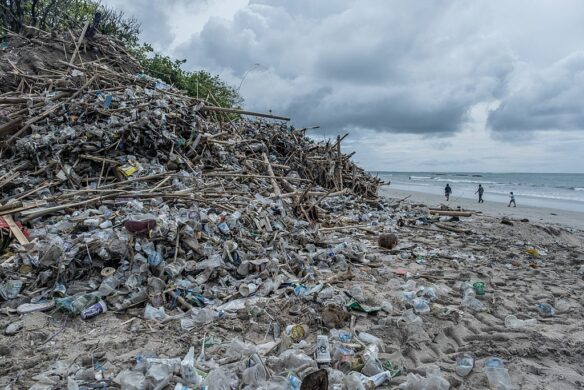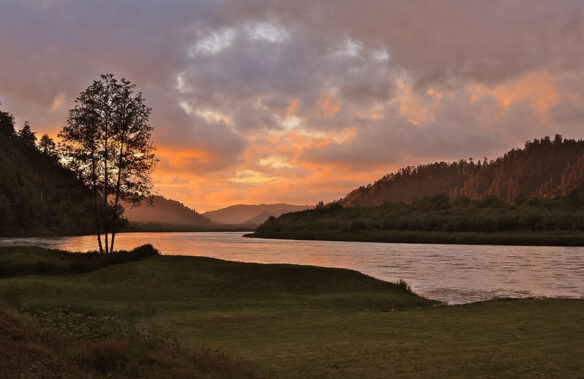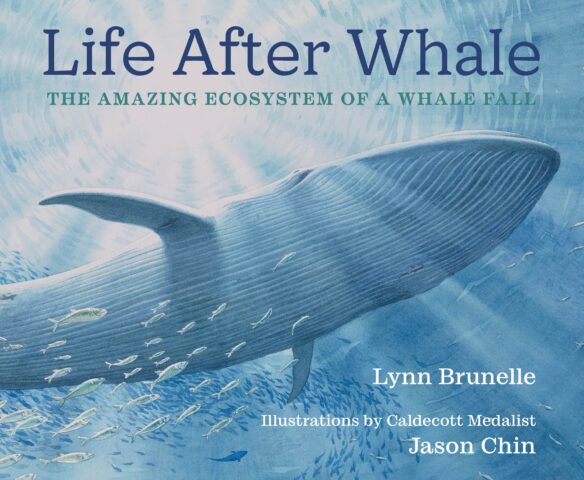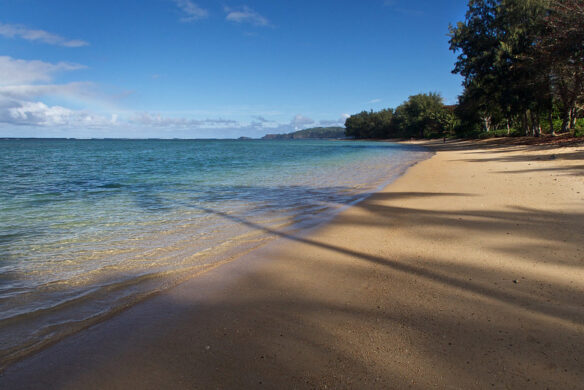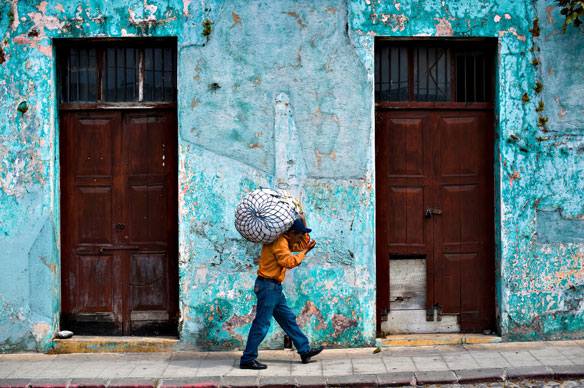
Antigua. Photo source: ©© Justonlysteve
By IRIN;
For Pacific islands like Palau, Tuvalu and Kiribati, the implications of climate change are clear, and devastating. Already, these governments have begun to plan for a future in which entire populations have to relocate as their islands vanish under the rising sea.
But climate change also threatens ways of life in subtler ways, leaving families around the world to work out for themselves how to cope.
Octavio Rodriguez, from Sucre, Colombia, said, “Rains recently have been intense – very intense. Years ago, the rainy season lasted two months, November and December, and water levels reached 20 to 30cm. Now, in the last six to seven months, they’ve reached over 2m. We’ve never seen this before. We don’t want to leave our land: here are our past, our memories, our ancestors. We don’t want to move to other parts; we don’t know what to do there. We would turn into delinquents. We’d enter into a cycle of poverty which happens in the cities.”
Rodriguez’s was one of many voices captured in Moving Stories, a new compilation of interviews from the Climate Outreach and Information Network, which reveals the discussions taking in climate change-affected areas. For many, the issue is how to modify their way of life without abandoning everything they know.
Further from home
Pastoralists may be able to change their grazing grounds, or range further from their main base for longer periods each year. But Hindu Oumarou Ibrahim, from Chad, worries that even these strategies may have their limits. “As a means of survival for us and our animals, we are forced to continuously migrate,” he said, “despite all the risks involved. This is our form of adaptation. We have always mastered it, but if nothing is done to ensure the safety of our space and activities, we risk one day being forced to abandon our way of life.”
Meanwhile Miguel, a farmer from Hueyotlipan, Mexico, works away from home to supplement failing harvests. “The rain is coming later now,” he said, “so that we produce less. The only solution is to go away, at least for a while. Each year I am working for three to five months in Wyoming [in the US]. That’s my main source of income. But leaving my village forever? No, I was raised here and here I will stay.”
Work by the Centre for Migration Research, at the University of Sussex, in collaboration with the Refugee and Migratory Movements Research Unit in Dhaka, Bangladesh, shows that this kind of response is very common, with some family members travelling to find seasonal work or moving to the city for a few months or longer to earn money. Climate-induced migration is far more likely to look like this: temporary and fairly local, an exaggeration of existing patterns, rather than a permanent move across international borders.
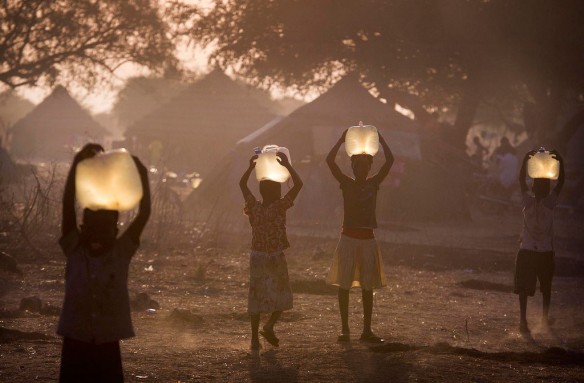
Children collect water for their families in the half-light of sunset. Captions and Photo source: ©© Oxfam International
Crisis or opportunity?
The money the migrants earn often supports families back home. It may even enable them to make investments – such as in flood defences, irrigation or new forms of livelihoods – that cushion the effects of the changing climate.
Dominic Kniveton, part of the research team from Sussex, says this kind of migration can be a positive thing. “The framing started around the view of people as vulnerable, as victims; it saw migrants as people that were impacted, something that was bad. As time went on, it started to be seen as adaptational. And, lastly, resilience has got in on the act, with migrants and their remittances being seen as building resilience for the community.”
But he worries that governments still tend to see rural-to-urban migration as exclusively negative, and that they are often compelled to create barriers to this movement. If they instead recognized it as useful behaviour, governments could do far more to assist migrants, such as improving working conditions in the sectors where migrants find jobs and providing training in the skills demanded in cities.
He says that Bangladesh, where the team has been working, has a long history of migration. “Irrespective of climate variability and change, people see this as a norm of behaviour. On one hand, we say that we don’t want people to be displaced, but we do say that, possibly, in certain contexts, migration can help people cope with future issues. What you want to do is… push people into a position where they have the conditions to take advantage, and remove them from the displacement situation.”
The perils of displacement
Kniveton spoke last week at a meeting in London that was also attended by Bangladesh’s high commissioner to the UK, Mohamed Mijarul Quayes. Quayes is one of his country’s most senior diplomats, and has considerable experience in international climate and environmental negotiations. He is concerned that emphasizing the usefulness of adaptive behaviour could obscure that fact that, for some people, there is no way to adapt – their homes are simply going to disappear. This will include people living in Bangladesh’s low-lying coastal areas and on land washed away when rivers change course.
“It is not a question of people making a choice of migration,” he says. “If you have a displacement, it’s a wholesale displacement, because there is no place to stay and the access to opportunities is washed away, all gone. And there will be people competing for opportunities in the equally populous contiguous zones… This movement would push [people] further, and there would inevitably be transboundary movement of people, tying up with gun-running and trafficking, smuggling drugs and the rest.”
For Quayes, those pressed to move because of climate change are displaced people, pure and simple. It bothers him that, while they may have the status of internally displaced persons within their own country, international conventions offer them no protection when they cross international borders, unlike those moving to escape persecution or violence.
He accepts that the political climate might not be favourable to creating a new, binding international instrument that, by offering protection, might encourage more migration. But he says that other arguments for helping these migrants can be made.
“We are as effective as our resolve. It’s critically important, therefore, to create ownership of taxpayers who recognize that this is important, not just from altruistic considerations, but because it affects all of us,” he told IRIN. “But if that doesn’t happen, we would have to fall back on what I call the securitization agenda.”
Driving migration underground encourages people-smuggling and other illicit activities, for example. “If you securitize [the issue], you will see funds running in there, because big boys tend to see security threats as more important than humanitarian issues,” Quayes said.
Meanwhile, back in Bangladesh, Mohamed Rashed and his neighbours in Qumira Char lie awake at night, filled with anxiety. “We lost mosques, a school, shops, farms,” he said. “We are scared of the sea now. Gradually, it comes closer to our homes. When we sleep, we are scared. Every year, the tide rises more and comes in further. Next year, this village may not exist.”
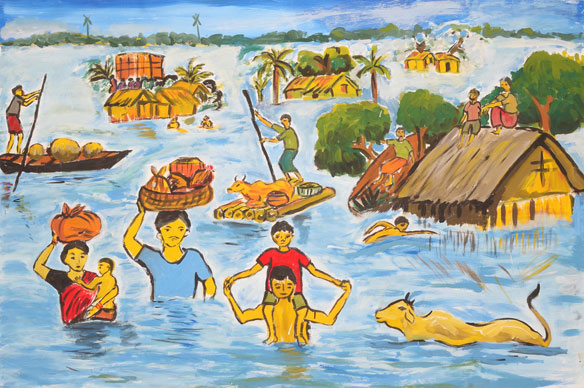
“Flood in Bangladesh,” climate change canvas by Students at Charupeeth School of Fine Art,
Jessore, south-western Bangladesh.
The painting was first used for an Oxfam International campaign that was publicised by Jugantor – a major national newspaper. Readers sent more than 80,000 postcards to the G8 embassies in Bangladesh, calling for them to “Stop Harming, Start Helping”. Artists from around the world have painted canvases illustrating the human impact of climate change in their countries. Sixteen of these canvases have been exhibited at the UN Climate Negotiations in Poznan, Poland, 2008. Captions and Photo source: ©© Oxfam International

